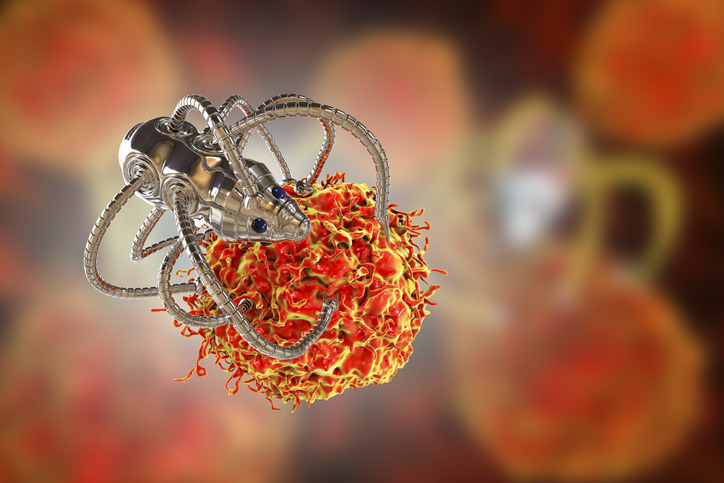A tiny robot which can travel deep into the lungs to detect and treat the first signs of cancer has been developed by researchers at the University of Leeds. The ultra-soft tentacle, which measures just two millimeters in diameter, and is controlled by magnets, can reach some of the smallest bronchial tubes and could transform the treatment of lung cancer. The researchers tested the magnetic tentacle robot on the lungs of a cadaver and found that it can travel 37 percent deeper than the standard equipment and leads to less tissue damage. It paves the way for a more accurate, tailored, and far less invasive approach to treatment.
The work is published in Nature Engineering Communications in the paper, “Magnetic personalized tentacles for targeted photothermal cancer therapy in peripheral lungs.”

In early-stage non-small cell lung cancer, which accounts for around 84 percent of lung cancer cases, surgical intervention is the standard of care. However, this is typically highly invasive and leads to the significant removal of tissue. Lung cancer screening programs have led to better survival rates but have also highlighted the urgent need to find non-invasive ways to diagnose and treat patients early.

Researchers at the STORM Lab have also been investigating ways of controlling two independent magnetic robots so that they can work together in a confined area of the human anatomy, allowing one to move a camera and the other to control a laser to remove tumors.
The devices are made of silicone to minimize tissue damage and are steered by magnets mounted on robotic arms outside the patient’s body.
Using a replica of a skull, the team successfully trialed the use of two robots to carry out endonasal brain surgery, a technique which allows a surgeon to go through the nose to operate on areas at the front of the brain and the top of the spine.
The researchers needed the magnetic robots to move independently of each other so that one could move the camera, while the other could direct a laser onto a tumor.
Normally, two magnets placed closely together would attract each other, creating a challenge for the researchers. They overcame it by designing the bodies of the tentacles in a way that they can bend only in specific directions and by relocating the north and south poles in each magnetic robot tentacle.
They were then able to simulate the removal of a benign tumor on the pituitary gland at the base of the cranium, proving for the first time ever that it is possible to control two of the robots in one confined area of the body. The findings of their research are published in Advanced Intelligent Systems.
“Our findings show that diagnostic procedures with a camera, as well as full surgical procedures, can be performed in small anatomical spaces,” notes Zaneta Koszowska, a graduate student in the STORM lab at the University of Leeds School of Electronic and Electrical Engineering.


